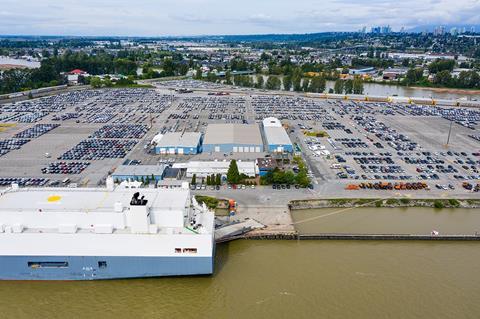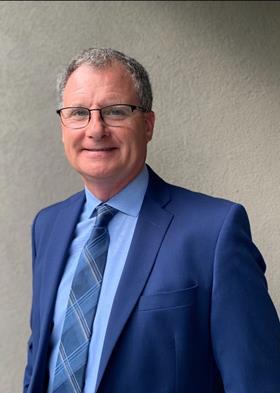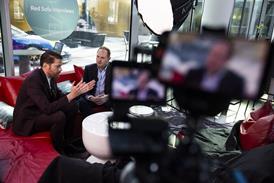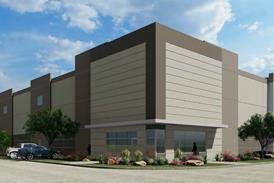Vancouver Fraser Port Authority is working with it terminal operator Wallenius Wilhelmsen Solutions (WW Solutions) to increase capacity and manage greater volumes of vehicle imports at a time disruption to finished vehicle logistics.

The Annacis and Richmond automotive terminals at Vancouver are currently operating at maximum capacity but modifications are needed to accommodate forecasted growth in demand for those imports.
Dan Emerson, vice-president of Canada operations for WW Solutions, explains how the company is dealing with the current headwinds.
Disruption to the delivery of vehicles continued last year across North America because of production delays and capacity shortages. How did this affect WW Solutions’ operations at Vancouver, and what were the main challenges the company faced in managing imports through the port?
Dan Emerson: Typically, and historically through WW Solutions’ Annacis and Richmond facilities, within the Vancouver Fraser Port Authority there is a ‘spring push’ that lasts from March through July, where there is approximately a 36% increase in auto volumes. Vehicle sales in Canada are quite cyclical, where the majority of sales take place within the warmer weather months.

However, in 2022, due to the production delays and lingering Covid impacts, we did not experience this push. We handled almost 100,000 fewer vehicles through our facilities last year compared to 2019, a conventional shipping year. As a result, we had to organise and plan our labour pool accordingly.
What were some of the more successful strategies used to maintain the efficient flow of vehicles and connect with inland transport services? Any significant lessons learned for the handling of future volatility?
One of the biggest takeaways from working through Covid was the need for additional timely and transparent communication between OEMs and logistics service providers. Especially with OEMs varying their production schedules at different plants, it is a challenge for us and our service partners to respond quickly. The adjustment of labour and equipment takes time.
One of the biggest takeaways from working through Covid was the need for additional timely and transparent communication between OEMs and logistics service providers – Dan Emerson, WW Solutions
When OEMs can provide timely, accurate forecasts, we and our service partners can in turn plan our resources and labour better. For example, we need to know, two weeks in advance, the exact volumes on every vessel sailing to our facilities. With this information we can put an operation plan in place to receive the vehicles and accurately inform the railroads so they can plan equipment to meet shipping capacity. By being able to share accurate volume forecasts from the OEMs with the railroads and other service partners, we can reduce the possibly of disruptions related to terminal congestion.
There is currently a shortage of ocean ro-ro capacity as the sector rebuilds more vessels following the pandemic. How is this impacting operations at the port and what is WW Solutions doing mitigate congestion and other disruptions?
We are seeing an increase of auto volumes per vessel heading to our facilities. In some cases, there are multiple OEMs shipping product on the same vessel. At this point in the year, we are amid a push within the Canadian auto market. At this pace, the volumes in 2023 are trending to return to pre-Covid volumes, where we are experiencing a typical spring push. While we’ve been able to prepare for and manage the push in the past, we have not experienced this phenomenon since Covid. There is additional pressure this year as the dealer network is eager to replenish their low inventories, which hasn’t been an issue in the past. Covid changed this and OEMs have yet to be able to boost inventories to balance against sales demand.
To handle these volume increases, we are working even closer with rail providers to communicate equipment demand. In addition, after years of planning we have just completed our rail expansion project and by doing so we have increased our railcar footprint from 83 railcars to 144. This will increase the opportunity to increase throughput with additional rail car support.
Is there any new digital technology now being used to more efficiently manage vehicle throughput and improve visibility and turnaround?
Vehicle processing still requires significant manpower, so we are always looking for opportunities to use technology to improve our operational efficiencies that in turn create a better working environment for our staff and assist in reducing potential for error.
On-site, we have continued our use of scanners to get real-time data, and feedback on the work being done to individual vehicles and by our production team. These scanners, which are the size of a cell phone, are used by production and supervisors to allocate staffing, review quality and competitions, manage productivity, manage accessory work, provide live inventory updates, and double-check final destinations to avoid misshaping to an incorrect destination.
Read more about activity at North America’s vehicle handling ports in the forthcoming summer edition of Automotive Logistics magazine, which is published in May

























![Global[1]](https://d3n5uof8vony13.cloudfront.net/Pictures/web/a/d/s/global1_726550.svgz)














No comments yet